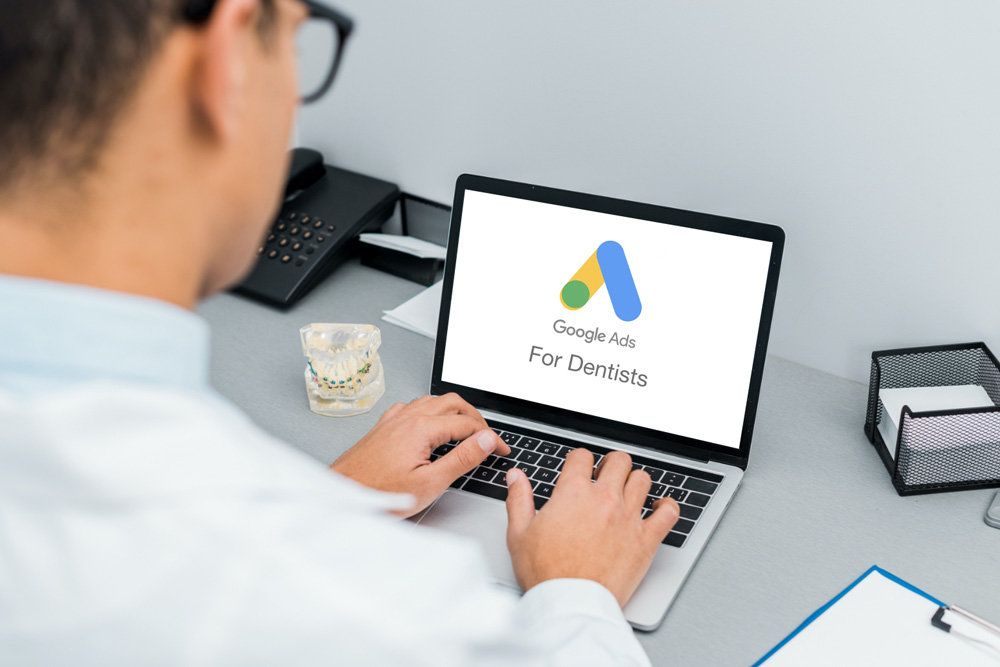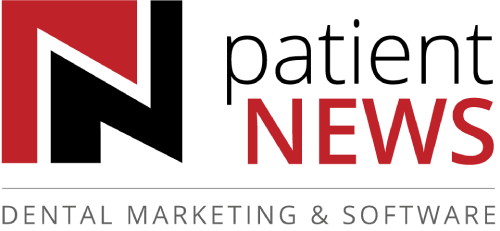Karen Galley

Dental marketing for dentists SQUIRREL! If you are like many business owners, distractions and shiny tools can take you off course, pulling you down a rabbit hole spending money on anything that sounds like it will get you some traction. Digital Marketing tends to be the worst for “shiny new widgets,” and due to new technologies popping up everywhere, how do you know which one will bring you the best results? Listings, social media, paid media, local SEO, keywords, meta descriptions, rankings, analytics, online ads, reputation management, blogging, linking… it goes on and on. What strategies will get you the results you need? What strategies will help you reach your goals? Today I am going to discuss paid media also known as pay-per-click (PPC), AdWords, or Google Ads. What is Paid Media? Definition: Paid media refers to external marketing efforts that involve a paid ad placement. Paid media includes PPC advertising, branded content, and display ads. For the purpose of this blog, I will discuss the paid media product called Google Ads. What is Google Ads? Taken directly from Google: “Google Ads is Google’s online advertising program. The program allows you to create online ads to reach audiences that are interested in the products and services you offer. The Google Ads platform runs on pay-per-click (PPC) advertising, i.e. [if you’ve placed a Google Ad,] you pay every time a visitor clicks your ad.” Why do I need Google Ads? 1.Quicker results over & above SEO Search engine optimization (SEO) is a foundational strategy that any great-performing dental practice website will have in place. With that said, it can take years to rank for a highly competitive keyword. Some businesses just will never see page-one rankings because other competitors are spending thousands per month to optimize. When you implement a Google Ads strategy, you can leapfrog the organic SEO winners by running ads targeting the keywords you can’t rank for organically. 2.Earn more conversions Conversions, in the dental industry, are appointment requests. Either by phone or through a form on your website. A Google Ads strategy is based on conversions. This (along with brand awareness) is why you spend marketing dollars on Google Ads – to generate more conversions that result in more business. IMPORTANT: Conversions are optimized and more likely to happen when there are landing pages created specifically for your Google Ads campaign. You can rely on Patient NEWS to ensure that this is taken care of for you! 3.Throttle your budget to meet your goals There is no minimum or maximum spend on Google Ads. With that said, our strategists will suggest a budget that will meet the conversion goals your practice is seeking. A great component, however, is that you can raise this budget as you grow or lower it when you are looking to scale back. Request a free consultation from one of our marketing consultants to get a free comprehensive report on Google Ads spend and what we suggest for your practice. 4.Target your ideal patient Google Ads targeting capabilities are wide-ranging. Demographics, location, and proximity will all factor into the strategy. What is important is that Google Ads allows you to capture prospects who are searching for specific services. For example, if you are looking to target more cosmetic cases, or more families, both require different strategies. What you need to know is that you can target your budget to the ideal new patient! Even better, all the results are trackable in a simple-to-understand format. Every month you will know how many impressions, clicks, and conversions you received. At Patient NEWS, we take it a step further and track exactly how much each patient who came from Google Ads spent at their appointment, giving you a true ROI. 5.Win over competitors There is nothing worse than having your competitors rank better than your practice does because Google feels they should win in organic rankings just because their practice has been operating longer than yours or they have a few more reviews. It especially rankles when you know your practice has a unique value proposition that is far more advanced and fitting for these patients. Google has made the choice to rank your competition higher due to 200+ different reasons that you can’t control. With Google Ads, you can quickly leap over your competitors by allocating a budget specific to the services and keywords for which you want the traffic. At Patient NEWS, we will help you identify which keywords are your best choice and which ad placements will bring you the best results. In conclusion… This all sounds great, right? More conversions, more new patients, trackable ROI… But wait! Google Ads is like any other marketing. You must make educated decisions backed by true market analysis data to get the predictable results we understand. You see, purchasing clicks on non-relevant searches can actually negatively affect your practice. Your website will experience high traffic with little conversion. We suggest consistent, ongoing tracking and management to ensure your hard-earned marketing dollars are not only spent correctly, but are tracked to provide you with reporting that is transparent. It’s all about EXPECTATIONS! Have you ever been told by an agency that you will achieve an SEO goal (page one rankings) or more conversions or more traffic or… This is par for the course to hear these types of statements. Materializing this is another conversation. At Patient NEWS, we analyze your market area and give you the information you need to make budget decisions that will help you reach your goal. You will fully understand what will type of strategy and budget you need you need to win new patients in your market. Paid Media is fast, but takes investment. SEO is a foundational strategy that takes time but will pull results as you build authority and a digital footprint. We will set these expectations with you. Don’t be in a position where you are guessing or relying on promises. Get the data you need from a market analysis to make the right decision. At Patient NEWS, we have worked with dental practices for over 28 years. Not only do we understand Google Ads strategy, but we understand the types of content and deliverables that will bring you the ideal patient. Reach out today and request a free consultation. Let’s discuss how we can implement a paid media strategy that brings you conversions with an ROI, month after month!

What will make your website stand out? When does it need a refresh? Here we are … 2021. Hope the door doesn’t hit 2020 on the way out! Let’s bring some positivity into 2021 with these awesome g for dental websites. In this blog, I am going to cover 5 new dental website design trends and why they are important. Your dental website is a strategic marketing campaign directed at prospects and patients to enhance practice visibility and promote your expertise as an authority in your field. We know it’s hard to face a refresh of your web presence – but my team at Patient NEWS makes it super-easy. Take advantage of a free consultation and find out what we might be able to do for you! 5 Tips to Improve Your Website Professional Vibe Clean & Comfortable Custom In-Office Imagery Parallax Accessibility 1. A Professional Vibe An element of value that patients always look for when choosing a dentist is professionalism. Patients want to know that they are making a good choice in a dental care provider and this means choosing a dentist who exudes a professional image. Your website must include design elements that align with convey your expert vibe.Ensure clear, crisp imagery. Busy images and designs will look unprofessional Use a favicon (an icon or logo that is associated with a URL and displays in the browser address bar or next to the site name in a bookmark list) Choose large memorable images that tell a story or add a component of emotion (happy patients with their family, a mom and daughter that resonates emotionally with the female head of household, people smiling into the camera, family members hugging). 2. Clean & Comfortable Clean and comfortable means a simple UX (user experience) that removes question marks from the user’s mind when they are browsing your site. When a prospective patient reaches your website, they are far enough along in their patient journey that they are close to making a decision on what practice to call. If your website is the opposite of clean and comfortable (messy, jumbled, illogical, or overwhelming), you will lose the patient long before they even think of making the phone call to your practice. What is a simple, clean, comfortable user experience? Use whitespace. It allows the important items to stand out. Steve Jobs said that the best designers know what to remove, not what to add. “Simplicity,” he said, “is the ultimate sophistication. ”Make sure buttons are in a contrasting color so that they stand out clearly and are consistent throughout the site. This will ensure they are instantly recognizable as “action items.” Easy-to-find phone number, map, appointment request, and services. No images of sharp tools or dental equipment – scary or not. Your potential patients are interested in what you can do for them – benefits – and not how you do it. Always be sensitive to dental anxiety; it must be taken into consideration. 3. Use Custom In-Office Imagery Use your own excellent professional photos as much as you can to personalize your site. Stock images must be used sparingly… The days of stock-imagery-only websites are getting old, predictable, and cliché. And there’s a very good chance they look like (or are even on!) your competitors’ websites. True-to-life in-office imagery on every webpage is proven to win more engagement which means potential patients will spend more time on your site and are more likely to engage with you by calling your practice. Use practice images that introduce elements of emotional warmth to your website. Carefully composed imagery and design will translate to prospects the feeling of what it will be like for them to be in your practice. If you include a front-desk shot, be sure to have your smiling team (albeit behind PPE) in the photo. You don’t want to show an empty practice! If you have a gorgeous office, reception area, or operatories, don’t feature them completely empty. Get in there with your team with big smiling faces to make patients feel like they will be welcomed into that gorgeous space. Include real-life scenarios or action shots of your team and doctors. Be sure to get a written patient image release or have a staff member pose as a patient. People want to know what to expect. Use photos of the practice that show off your carefully designed environment that prospective patients are curious to see and that they’ll want to experience! 4. Parallax Parallax scrolling has been around and popular for a few years now – I’m sure you’ve seen it. It’s where, in a website layout, the background of the web page moves at a slower rate than the foreground, causing a 3D effect. Introducing a parallax element into your website, when done right, can give a nice, subtle, and distinctive depth. Quickly though, this technology becomes overbearing and causes nausea if you’re not careful. The goal is to use this design style with a light hand … and class. Why is Parallax a nice feature for a dental website? When parallax is done right, it will guide your visitors through your website towards a call to action using the depth feature, or it will tell a story with the design features on the page. CAUTION: Use parallax sparingly! A dental website is a service-based information engine. Much of the time users know what they are looking for, they just need to find it! We don’t want the patient to be scrolling through a site filled with over-used and distracting story-telling elements, especially when using parallax, just to find an address! 5. Accessibility Website accessibility for people with disabilities has always been important, and now in 2021, it is critical! Web Content Accessibility Guidelines (WCAG) and the Americans with Disabilities Act (ADA) both provide guidelines that incorporate the standards necessary to make websites accessible to people with disabilities. Not only is this about avoiding possible lawsuits; it’s about better serving your patients and prospects. Some website accessibility standards to consider: Navigation: Clear navigation is an important component of any website. Be careful when using new types of navigations. They may be sleek and modern, but are they accessible? A professional web designer understands this clearly. Text: Use an ideal font and the font size that makes your text readable on all platforms, devices, and browsers. A professional designer will nail this. Forms: Make sure to add labels to each field to make forms more accessible. Buttons & Links: Avoid using images for buttons. And make links with clearly legible text, use consistent stand-out color, and ensure URLs are correct and functioning. Website Refreshes – The importance of keeping your site relevant, modern, and up to date! Is your website a part of your business that makes you proud? Are you embarrassed to show it to your friends? Frustrated with your current provider? Looking for higher interaction and conversion? Keeping relevant content tells your prospective patients that you are on the leading edge of technology and that you care about the image your brand is projecting. It tells them you’re serious about keeping them informed, communicating clearly, and that you want their business. By staying modern and relevant to new design technology, your website will begin to build patient trust before patients even arrive at your practice. With Patient NEWS , a website refresh will improve some of its most important aspects, increasing the value of this critical marketing tool. Patient NEWS Website Refreshes Include… Up-to-date content & messaging Navigation that is clear & easy Modern look that reflects your modern practice – equipment, techniques, skills, mission, & more! New services & supporting educational content Your personalized tagline, motto, or mission Updating old messaging you’re no longer in love with Assurance that your website looks great on all devices for the best UX Call tracking & call scoring for real-time, data-supported performance & conversion results Links to current patient forms for patient convenience & ease. Have you heard of digital empathy? This is when your website uses compassion, cognition, and emotion to enhance user experience. That’s what a Patient NEWS website refresh does, plus it eliminates digital friction (the unnecessary effort exerted by patients and potential patients to get the information they need from your website). Put yourself in the patients’ shoes. They don’t want to be scrambling to find information they are looking for. And you don’t want them to be scrambling to find information that “clinches the sale.” When you refresh your website to speak your brand voice and eliminate digital friction, you will win over patients. Patient NEWS can help!

An analysis on trends & keywords Finally, 2020 is on its way to a close! 2021 couldn’t come any quicker! That means we can go back to normal right? We all know that is a far cry from the truth, but it doesn’t stop the 2021 trend reports, like the one provided in this blog. In this blog, I will be focusing on high-volume keywords that will drive traffic to your dental website. I will also cover a key trend that will give you insight into how the patient journey has been affected by the Coronavirus. Are you ready? Let’s go! What are keywords and why are they important? Keyword, now officially in the Oxford & Merriam-Webster dictionaries, is described as an informative word used in an information retrieval system (Google) to indicate the content of a document. How is this relevant to your dental SEO strategy? Because your website needs to be relevant to patients when they are searching for a dental practice. You (or your dental marketing agency) needs to choose keywords that patients are researching and asking questions about and that will be used throughout your website. This way, you will generate more traffic to your website, resulting in more appointment requests and phone calls.

1. Is your content simple, digestible, and relevant to the user? An in-home eye-tracking study performed by Facebook IQ revealed this outstanding (but believable) statistic. 94% of people have a mobile device in their hand while watching TV. It’s proven that humans are terrible multi-taskers, so how do we expect people to digest the 25 pages of content you have on your dental website when they are busy watching Simon Cowell “X” a contestant on America’s Got Talent? The fact is, you have seconds to convert a new patient through your website. If they can’t find what they are looking for (like a picture of the doctor or a map), you are losing the prospect before you even get a chance to convert a phone call or request an appointment. 2. Dental Websites User Experience. When people arrive at your dental website, it’s rare they visit more than 3 pages … it’s common that they only visit one page! The reality is that human behavior today is made up of short attention spans, multi-tasking, and laziness. As a culture, we expect information to land in our laps without having to work for it. Your long-winded website is getting lost in the shuffle. It’s time to simplify and strategize. It’s time to accept the facts of human behavior and react accordingly to our dental website strategy. At Patient NEWS, our analytics tell us that users consistently visit 1-3 pages maximum! It’s extremely rare to see a user go to more than 3 pages in a visit on a dental website. This proves that people want information quickly. They don’t want to or need to – and won’t – read 15 pages about your services to find what they need. 3. The “About Us” page is the most-often visited page on your dental website. In many cases, About Us is the only page visited after the home page. We’ve done the studies and have the data. Below are 3 examples of live heat maps on dental-specific websites, proving that the About Us page is clicked on the most … by a landslide. This data proves that a prospect seeking a new dentist wants to learn quickly about the doctor and their team. The navigation must be simple. You do not want a situation where a prospect is having to dig through multiple pages to find simple information about the doctors. Heat Maps Prove “About Us” Is #1

How reviews & electronic word-of-mouth can tell you the full story! “User-generated online reviews have been continuously gaining credibility in the eyes of consumers, and today they are an essential component of the consumer decision-making process.” (Proserpio et al., 2016) As a dental practice looking to win against competitors in your community and become the dentist of choice, managing your electronic word-of-mouth is critical. Not only because consumers look to reviews before making a purchasing decision and that reviews help your practice rank online, but because reviews provide valuable insights that can drive your decision-making. Further to the growing data that proves reputation management and review generation is critical, analysis of almost 1000 dental office reviews provides clarity for connecting the dots between reviews and an enhanced patient experience. Developing an intentional culture inside your practice to make review generation a managed strategy makes sense for the practice that wants to deliver an exceptional experience for patients who choose your practice, return and refer, and increase production and profits. Reviews and electronic referrals don’t only help your practice prove to the community you are a professional, trusted, and friendly practice, they also give necessary feedback about how you are performing, affirmed through the sentiments of your actual patient consumers. Through understanding consumer behavior and the relationship values that drive appointments, you can better position your brand and develop strategies that convert! 88% of people trust online reviews as much as a personal recommendation. As important – reviews tell you what’s working and what’s not at your practice. This blog is written to provide you with industry research and facts revealing the values that are driving consumers to select, visit, and advocate for one dental practice over another. Public data provided by review sources such as Google My Business were compiled for the analysis of almost 1000 reviews posted for dental practices. So what are patient perceptions and the relationship factors that build new patients and retain active ones? Relationship Value Drivers & Consumer Behavior A study by McGuigan and Eisner, marketing the dental practice, 8 steps toward dental marketing success concluded that the elements that establish trust between the patient and the dental practice are critical, specifically: competence promptness reliability ability to customize solutions politeness. Another relevant study by Sbaraini (2012) that focused on the effects of patient relationships states that patients value having a caring, professional dentist and staff, regardless of the severity of dental treatment. “THE MOST IMPORTANT HEALTH-SERVICE FACTOR AFFECTING PATIENT SATISFACTION IS THE QUALITY OF THE DOCTOR-PATIENT RELATIONSHIP.” A Harvard Business Review article outlined the elements of value in a business-to-consumer (B2C) environment. The values are based off Maslow’s Hierarchy Of Needs, coming from 3 decades of consumer behavior analysis. The conclusion of the study is simple: The more values your practice can excel at, the more loyal your patients will be. What elements of value does your dental practice provide?

For many years, dental practices have relied on relational (or relationship-driven) value drivers as their marketing strategy foundation. These value drivers include face-to-face interaction, responsiveness, short wait times, human interaction, and word-of-mouth referral business. Since March, the world has changed and businesses have had to become accustom to, and adjust to, the new normal. Human interactions are also changing and, in response, dentists must add innovative strategies to their business acumen. Staying in touch with people from a distance can be achieved through digital technology. For example, Google Ads provide a useful, effective way to heighten and keep brand awareness and ensure lead generation is working in your favor. This technology cleverly helps you embrace the ongoing transformations – and even leverage them – during a time of limited human interaction. Google Ads For Dentists Google Ads are a way for businesses to advertise their products and services … but it’s an auction system. You bid to have your ad appear when a user performs a search in Google using a specific keyword (or phrase) that you want to “own.” When you “win” that keyword, your ad will appear at the top of their search engine result page. You’ve seen this happen – you get results with the top few hits prefaced by the word “Ad” in front of the listing. Many dentists use this strategy to ensure they are staying relevant and competitive in their community by keeping brand awareness up and making sure they are visible when people are searching for a dentist. The result of a great Google Ad strategy is more traffic to your website, more online appointment requests, and more phone calls to your practice. COVID-19 has changed the landscape of a successful Google Ad strategy. In this blog, I’ll explain the impact the coronavirus has on your healthcare-specific Google Ads campaigns. The Impact Of COVID-19 On Google Ads For Dentists Neil Patel, a well-known marketing leader says, “During an economic downturn, you’ll find that you will have less competition, which means it is easier and faster to get results, and in some cases, you’ll be able to get deals, such as a potential reduction in pay-per-click advertising.” Patel also has completed an interesting study on online traffic growth or decline, and his data suggests that the healthcare industry has seen a 15% increase in traffic due to coronavirus (see Table A below). Much of this engagement is assumed to be coronavirus-specific inquiries. Patient NEWS also holds a ton of data on dental practice websites, and from a high level, we have not seen a drastic drop in online traffic. In fact, in many situations we have seen an increase in traffic but lower conversion rates. This suggests that there may be patients wanting to learn more about how your practice is dealing with the pandemic and what new state-of-the-art protocols you’ve put in place to keep them safe, but they’re not booking an appointment right away. Table A: Traffic Growth or Decline Due to COVID – 19
Stay In The Know!
Join 20,000 dental colleagues today!
Subscribe to our weekly updates, and/or request a free brochure and product samples.


